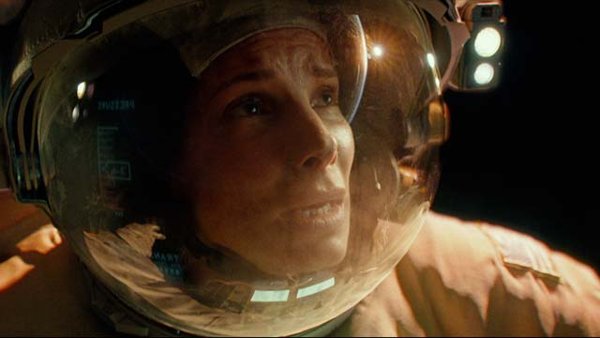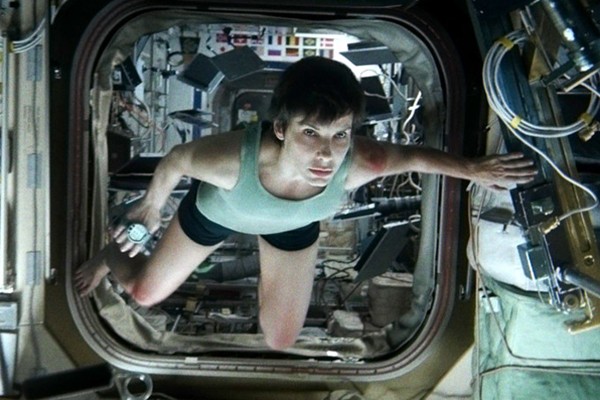Gravity Review
We waited long enough to see what Alfonso Cuarón had in store for us next, but no one expected a visual effects game-changer. “Gravity” is an experience, something you might expect to see at a science museum in IMAX but with an intense plot. And even though its minuscule cast and real-time feel expose it to plot holes and improbabilities, it is truly something to behold.
Sandra Bullock stars as Dr. Ryan Stone, a genius engineer on a mission to update the Hubble Space Telescope with a crew of veteran astronauts, including Matt Kowalsky (George Clooney), on his late mission before retirement. When a Russian missile strike on a satellite goes awry, it causes a field of debris to come flying at their shuttle, but before they can entirely abort the mission, the shuttle is obliterated and Kowalski and Stone are sent hurtling into space with little chance of survival.
“Gravity” shares qualities with both disaster films and sci-fi space opuses. In the context of outer space, Cuarón’s long takes are reminiscent of “2001: A Space Odyssey,” but “Gravity” is less intellectual and more of a survival tale with poetic aspects. It consists of a range of tones, from intense to reflective, from claustrophobic to vast and empty — all within a 90-minute run time. You’ll feel this movie in your bones after you get up.

No matter how you feel about “Gravity,” taking the time to consider how the film was made will turn any opinions into total admiration. Although none of us can truly relate to the physics of space, creating a movie in which gravity does not exist (notice the poetic irony of the title?) has to be considered a hell of a feat. And Cuarón doesn’t just make a movie set in space, he insists on making it feel as though it were filmed in space. He tries just about everything with the camera, from shots inside Stone’s helmet to seemingly endless tracking shots. Pulling this off with as much authenticity as he appears to have, is worth nothing short of a high commendation.
The lack of characters in “Gravity” puts a lot of pressure on Bullock and Clooney to be interesting enough to capture our attention. Bullock’s constant panic is painful, but in doing so she maintains the film’s adrenaline rush, and her humanity wins enough sympathy to make the quest for survival at the heart of the story work. Without a strong performance here, “Gravity” would in fact slowly drift into obscurity; she provides a vested interest in the outcome of the disaster.
“Gravity” contains very few traditional storytelling devices. Only the sequence of events has a Hollywood feel to it in that it’s rather contrived; there’s no way Stone manages to come out unscathed during various debris showers, for example. Moments of disbelief will crop up all over “Gravity,” so when you add in the slower, imagery-driven moments along with some dialogue that’s squeezed in so that we get to know Stone a bit, it’s a surprise that the reaction to “Gravity” has been so universally strong.
Without question, “Gravity” demonstrates what 3D filmmaking is supposed to look like and be used for, and should set the bar for filmmakers aspiring to use it. Considering Cuarón directs the film to be an immersive experience, the 3D magnifies this effect to a considerable degree. Few films have conveyed the “experience” of a movie the way “Gravity” has, an accomplishment that makes fretting over the script contrivances feel like a petty waste of time that totally misses the point. “Gravity” will long be remembered as a defining example of the history and development of filmmaking in the 3D era.
4.5/5 Stars
Directed by Alfonso Cuarón
Written by Alfonso Cuarón and Jonas Cuarón
Starring: Sandra Bullock, George Clooney






0 Comments
You can be the first one to leave a comment.